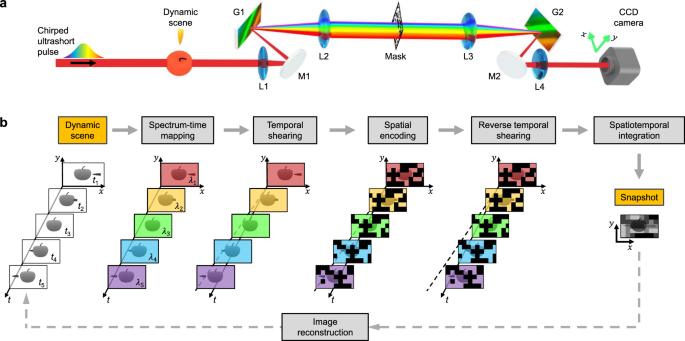Phys.org March 25, 2024
Despite real-time femtophotography advantages over conventional multi-shot approaches, existing techniques confront restricted imaging speed or degraded data quality by the deployed optoelectronic devices application scope, acquisition accuracy, and hindered by the limitations in the acquirable information imposed by the sensing models. An international team of researchers (Canada, France) overcame these challenges by developing swept coded aperture real-time femtophotography (SCARF). This enables all-optical ultrafast sweeping of a static coded aperture during the recording of an ultrafast event, bringing full sequence encoding of up to 156.3 THz to every pixel on a CCD camera. They demonstrated SCARF’s single-shot ultrafast imaging ability at tunable frame rates and spatial scales in both reflection and transmission modes. Using SCARF, they imaged ultrafast absorption in a semiconductor and ultrafast demagnetization of a metal alloy… read more. Open Access TECHNICAL ARTICLE

Principle of swept coded aperture real-time femtophotography (SCARF). Credit: Nature Communications volume 15, Article number: 1589 (2024)